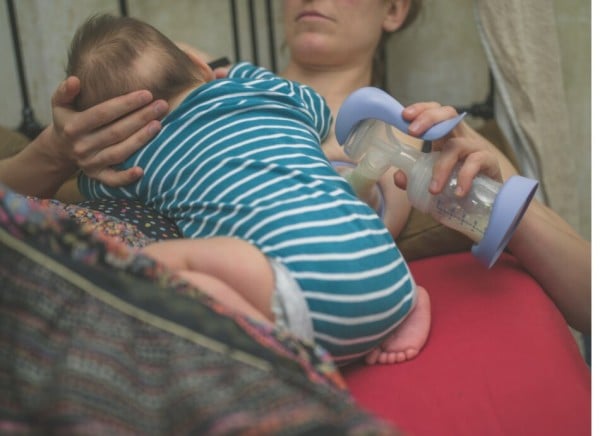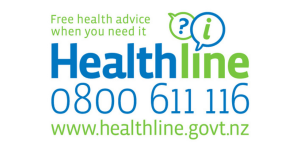Breastfeeding – expressing milk
Key points about breastfeeding and expressing milk
- Expressing milk is another way to feed your baby with breastmilk.
- It might work best when you're separated from your baby, can't breastfeed for any reason, or simply would prefer to feed your baby with a bottle.
- Find out how to express milk by hand or with a pump and how to safely store expressed breastmilk.

There are a number of reasons why, as a breastfeeding mother, you might want to express milk rather than feeding your baby directly from your breast:
- Your baby may be premature and too small to suck properly. In this case, your expressed milk can be fed to the baby through a tube under medical guidance while they're in hospital.
- Some babies with a cleft lip or palate find it difficult to suck and need to be fed expressed milk with a specially shaped spoon or teat.
- You may wish to leave your baby with someone else. Your expressed milk can be fed to your baby via a bottle, a cup, an eyedropper or a spoon.
- If you are working outside the home and wish to provide breast milk for your baby when you are at work.
- Breast milk contains antibodies which will help protect your baby against illness – which can be especially valuable if the baby attends a day care centre with other children and needs to be fed when you are not there.
- You may simply wish to express a small amount of milk to mix with your baby's first solid foods.
- You may prefer to feed your baby breastmilk from a bottle.
Expressing by hand
Expressing milk by hand needs a fair bit of practice and is time consuming. You may need to enlist the help of your midwife, a friend or La Leche League. There are slightly different methods, but the main aim is to assist the 'let down' of milk and drain the milk sinuses.
To stimulate the let down you have to do the following:
- Start at the top of each breast and with each hand press inwards, moving your fingers in a circular motion on one spot for a few seconds.
- Work around both breasts doing this.
- Working around your breast again, stroke gently with a tickle-like stroking action, towards the areola (the dark area around the nipple).
- To drain the milk sinuses, put your thumb about 2 cm above your nipple and your first t2 fingers about 2 cm below your nipple.
- Gently roll your thumb and fingers around in a slight twisting action by pushing inwards, don't press too hard.
- Work all around the areola repeating this action.
- Keep expressing like this until the milk flow slows down and do the same on the other breast after about 3 to 5 minutes.
- Repeat on both breasts.
- The milk comes out in small bursts at first and then flows freely.
Things that might help
Here are some things you can try to make hand expressing easier:
- Set yourself up in a warm, private place and use whatever techniques (eg, meditation, listening to gentle music) help you relax.
- Apply warmth to your breasts before expressing.
- Have a skin-to-skin cuddle with your baby before you start.
- Think about your baby or smell a piece of their clothing to help the milk flow.
- If it's not comfortable try adjusting your hand position.
- Remember to move around your breast as the flow decreases (to drain different milk ducts) and move from one breast to the other and back.
Once you can release a spray of milk rather than a drop or a dribble you know you've got a good technique.
You can watch educational videos on YouTube (there's an example linked below) or your midwife can show you how to express breastmilk by hand.
Video: How to hand express breastmilk
(Sandwell & West Birmingham NHS Trust, UK, 2021)
Expressing using a pump
Many people use pumps, which are available to purchase at any Baby Store or online. These are available as manual pumps, electric pumps, and battery powered pumps. It's best to discuss this with your midwife/GP as many people buy pumps to suit their goals and individual situation.
If you need to express milk while you're in hospital with your newborn baby you may be able to hire a pump.
If you want to use a pump at home it might be tempting to buy a pump second hand, but Plunket doesn't advise it as there may be problems with sterilising all the parts. Home sterilisation may not be good enough for removing all the bacteria – especially in the rubber parts. Parts may also have become worn. You may be able to buy an electronic pump mechanism second hand as long as you buy new attachments for it.
Whether you use an electric or a hand vacuum pump you still have to stimulate the 'let down' as you would for expressing by hand. If using a pump be careful not to exert too much suction on the nipple. Pumps can occasionally be a bit fierce and crack or split the nipple. You can talk to your local pharmacy or midwife about getting a nipple shield to protect your breasts if you have these problems.
A pump should be treated like a baby's feeding bottle and needs to be sterilised thoroughly after use. Read the manufacturer's instructions and use and look after the pump as directed.

Image credit: Canva
It's best to express directly into a sterilised airtight plastic container with a lid, or a sealable bag.
Storage times
- Bench: If you don't have access to a fridge, breastmilk can be kept on the bench for up to 4 hours as long as the temperature is less than 24ºC and it is stored in a covered container.
- Fridge: The milk can be kept in the fridge for up to 72 hours (3 days) at <4ºC. Store at the back of the fridge where it is cooler and not in the door.
- Freezer options: Breastmilk can be frozen for:
- up to 2 weeks in a freezer box inside a fridge
- 3 to 6 months in a freezer compartment of a fridge/freezer
- 6 to 12 months in a separate chest freezer (deep freeze).
Label each container with the date, month and year and use the oldest milk first. Also write ‘Expressed Milk’ on the container in case someone mistakes it for something else. Don't add fresh, warm expressed milk to milk which is already frozen or cold.
Frozen milk is best thawed by holding the container under cold running water then gradually warmer water to bring the milk to body temperature. Breast milk is not homogenised (milk, fats etc all mixed together) so it will separate. Swirl gently to mix.
Microwaves are not recommended for thawing breastmilk as they heat unevenly and your baby's mouth or throat could get burned. Don't leave expressed milk standing around for long at room temperature. It's not safe to refreeze milk either, so throw away any leftover milk or use it for a 'milk bath' for your baby.
You can phone Plunketline on 0800 933 922(external link) anytime day or night for advice about breastfeeding.
You can also talk to your midwife, doctor or Plunket nurse. For detailed help, contact a lactation consultant(external link).
Other groups to contact include La Leche League(external link).
Breastfeeding (wide range of resources)(external link) Health New Zealand | Te Whatu Ora
Online support(external link) Breastfeeding, NZ
Expressing breastmilk(external link) Plunket Whānau Āphina, NZ
Wai ū – Ko te whenua te wai ū mō te tangata Hāpai SUDI Prevention Co-ordination Service, NZ
References
- Healthy eating guidelines for New Zealand babies and toddlers (0 to 2 years old)(external link) Ministry of Health, NZ, 2021
- Expressing breastmilk(external link) Plunket Whānau Āphina, NZ
- Second hand feeding equipment(external link) Plunket Whānau Āphina, NZ
- Hand expression(external link) CDC, US, 2022
- Hand expression of breastmilk(external link) La Leche League, UK
Credits: Healthify editorial team. Healthify is brought to you by Health Navigator Charitable Trust.
Reviewed by: Dr Stella Lisle, Health New Zealand | Te Whatu Ora Canterbury
Last reviewed:
Page last updated:





